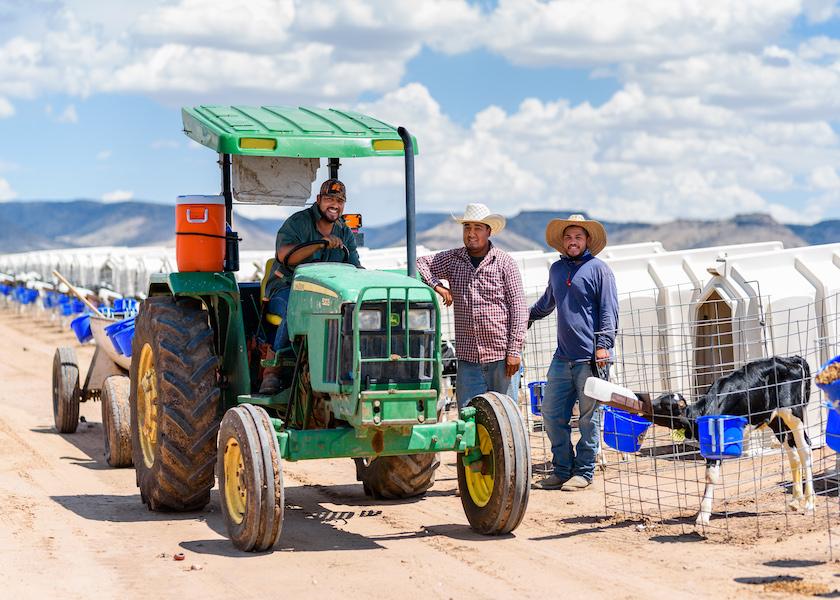Combat Labor Headaches Head On

Labor shortages are no longer a stark headline, but instead a continued headache dairy farms are faced with. Recently on an Ag Future podcast, Dr. Luke Miller, dairy technical support specialist at Alltech, spoke about training and retaining labor on dairy farms.
Miller has a wealth of expertise in this topic and a deep pedigree in the dairy industry, including his experience as the general manager of a 6,000-head, multisite dairy in central Calif., managing a team of 45 employees. In addition, Miller served as a large-animal veterinarian and became the owner of a practice that addressed all facets of large-animal medicine.
While the struggle is real in finding labor, Miller recommends dairy owners hit pause and understand who they are trying to hire in the first place.
“The basics, to begin with, is to start understanding who we're trying to hire and understanding where they came from and their basic levels of both education and interest in the group, in the dairy,” he says. “We know that many of our laborers are not loyal to a particular place or particular farm, so we try to invest in them as much as we can.”
According to the National Milk Producers Federation (NMPF), immigrant labor accounts for more than half of all dairy labor, and dairies that employ immigrant labor produce 79% of the U.S. milk supply. NMPF takes a bold stance on key issues, like labor and immigration reform and says if the U.S. dairy industry lost its foreign-born workforce, it would nearly double retail milk prices and cost the total U.S. economy more than $32 billion.
Helpful Tips with the Hiring Process
Miller offers some tips to help with the hiring process, including:
Organizational Charts
Miller suggests an organizational chart, something he says that a dairy of all sizes should have.
“I preach this every place I go, that — understanding employees want to have a box,” he says. “They know where the top is and know where the bottom is. They want to be put in that box, and they want to understand the basics of their job so that they can fulfill what you want them to do, and they feel like that’s gratifying to them.”
Job Description
Many dairies do not offer job descriptions to their employees. Miller says they are simply hired because they showed up that day.
“Job descriptions and some early vetting of who we're actually bringing into the dairy is important.”
Proper Hiring
Miller strongly encourages producers to take a stronger stance when it comes to proper investment in the hiring process. He shares if a carload of employees stopped, asking for work, very few producers would turn any of those employees away.
“In reality, at least 20%, at least one of those guys or girls in that car —someone in that car is going to hurt you, and it might be through OSHA. It might be through morale. You might turn around and six months later, your entire workforce has flipped over and it's a negative experience, and that is not what we want to do. We need to understand who we're bringing in,” he says.
Top 10
Miller says part of the onboarding process should include 10 questions. He shares that there is no cookie-cutter questionnaire list.
“I think that having 10 questions - and they don't have to be my 10 or your 10 or anybody else's 10 but having the 10 for our dairy — you can sort a lot of things out if you just ask the basics,” he shares. “The second step of that is to train the trainer. We have to have somebody on the dairy who knows how to train people, and we put them in charge of — not the hiring, but the actual onboarding of the person when they start. We find a guy we like. We find someone we want to put on the dairy. We send them out with a trainer. You have an hour, two hours a day — whatever it takes to appreciate their skill level.”
To listen to the entire podcast where Miller talks about educating employees on stockmanship, technology input, employee feedback and more, go to #211: Training and retaining labor on dairy farms | Dr. Luke Miller (podbean.com).







